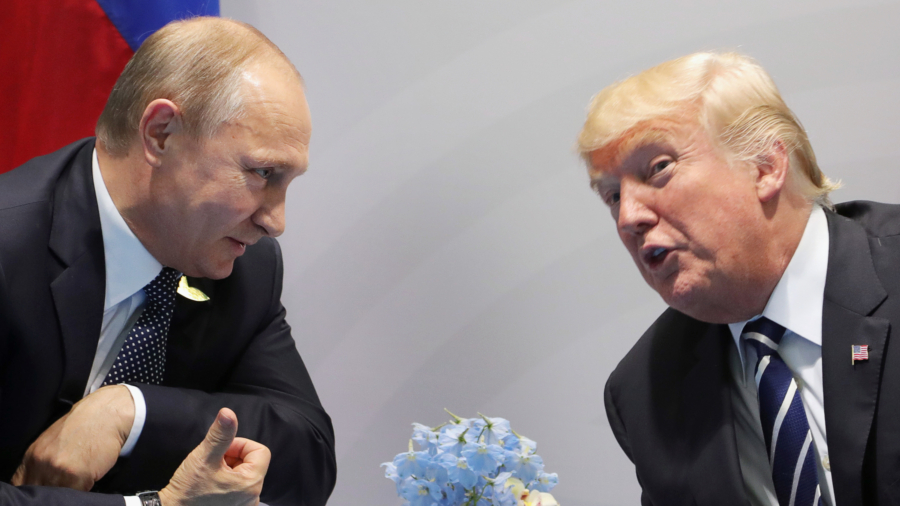A new ceasefire will go into effect Sunday in southwestern Syria after the United States, Russia, and Jordan reached a “de-escalation agreement,” Secretary of State Rex Tillerson said on Friday.
The deal comes after President Donald Trump and Russian President Vladimir Putin met in Hamburg, Germany where world leaders have gathered for the G20.
The deal is limited to a defined region of Syria and meant to be a stepping stone in an ongoing process, said a senior State Department official involved in the negotiations.
“It is a very complicated battle space. We are starting with fairly modest ambitions,” the official said Friday.
The agreement saw the U.S., Russia, and Jordan define a clear lines of contact—boundaries between the combatants—that secured the most essential part of any ceasefire.
The official said there were many discussions and negotiations left to fill out the ceasefire, but with the lines of contact established, and a sincere desire by all sides to stop it, there was no point in not starting it immediately.
Still to be negotiated is how the ceasefire will be monitored.
The area, which has seen escalating violence since February, gives Russia and the United States a place to start working to build wider peace in Syria—dependent on the cooperation of their respective allies.
With Jordan and the U.S. using their influence on the opposition forces, and Russia doing the same with Syria and Iran, the official said there was a chance to stop the fighting in the region.
It is much harder to establish the kind of nation-wide ceasefire that was previously attempted, however, due to the varied conditions across the country.
But he warned there were “spoilers on the ground,” including Daesh—a pejorative term for the ISIS terrorist group—al Qaeda, and the Syrian regime who may want to wreck the ceasefire.
Russia, however, seemed sincere in its desire to back the ceasefire, said the official, adding that it was “worth our effort and our time to test them on this.”
Tillerson said the ceasefire was a “well defined agreement” and would secure a “very complicated part of the Syrian battlefield.”
The deal comes two days after Tillerson made a statement on how the situation in Syria is to move forward.
He set out three key requirements: stability on the ground, a political process to achieve a settlement that “charts a way forward for the Syrian people,” and for Russia to play a role in both those efforts.
“Actors in Syria must remember that our fight is with ISIS. We call upon all parties, including the Syrian government and its allies, Syrian opposition forces, and Coalition forces carrying out the battle to defeat ISIS, to avoid conflict with one another,” Tillerson said in a press statement on July 5.
Speaking to reporters in Hamburg on Friday, Tillerson voiced optimism that Russia and the United States could make constructive steps on the Syria issue.
“I think this is our first indication of the U.S. and Russia being able to work together in Syria, and as a result of that we had a very lengthy discussion regarding other areas in Syria that we can continue to work together on to de-escalate the areas,” Tillerson said.
Russian Foreign Minister Sergei Lavrov told Russian media that the United States has committed that all groups in the region would follow the ceasefire.
Security in the de-escalation zone would be ensured by the Russian military police in coordination with the United States and Jordan, Lavrov told Russian state-owned news agency Tass on Friday in Hamburg.
“At first, the security around this zone will be ensured with the use of the personnel and resources of the Russian military police,” Lavrov said.
Russia is the Syrian regime’s main international backer and joined the Syrian conflict in force to prevent President Bashar al-Assad’s regime from falling to rebel forces. Iran-backed Hezbollah fighters also support the Assad regime.
The conflict has killed nearly half a million people according to the Britain-based Syrian Observatory for Human Rights.
Millions more have fled the country, sparking an international refugee crisis.


